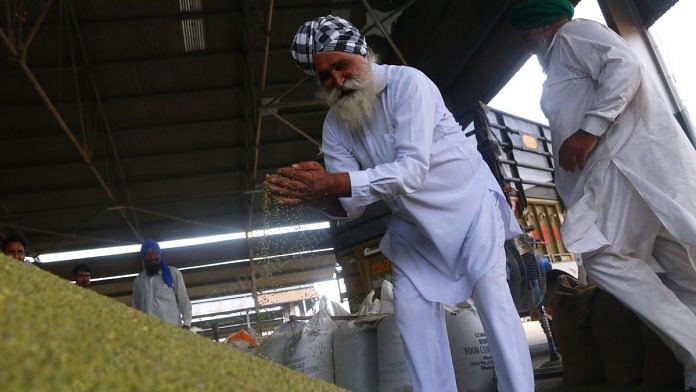Ludhiana: There was an air of anticipation at the pulses wholesale market in Ludhiana’s Jagraon Thursday. Around 40 tractor-trolleys had gathered at the mandi by 9 am, all bearing sacks of moong (green gram), which saw record cultivation in Punjab this year.
By noon, Jagrar Singh, a farmer from Kussa village in Moga district, had finished unloading 10-odd quintals in a shed to protect the moong from intermittent rainfall. Then, he and several other farmers from Moga and Ludhiana districts waited for the state government’s quality check teams to arrive.
Passing the test would mean they could sell their produce — for the first time — to the Punjab government for the minimum support price (MSP) of Rs 7,275 per quintal, a move allowed by the state only last month.
If not, they would have to look for a commission agent and sell off the summer moong at market price — around Rs 6,000 per quintal as of Thursday at the Jagraon mandi. Either way, there was a chance of making good money.
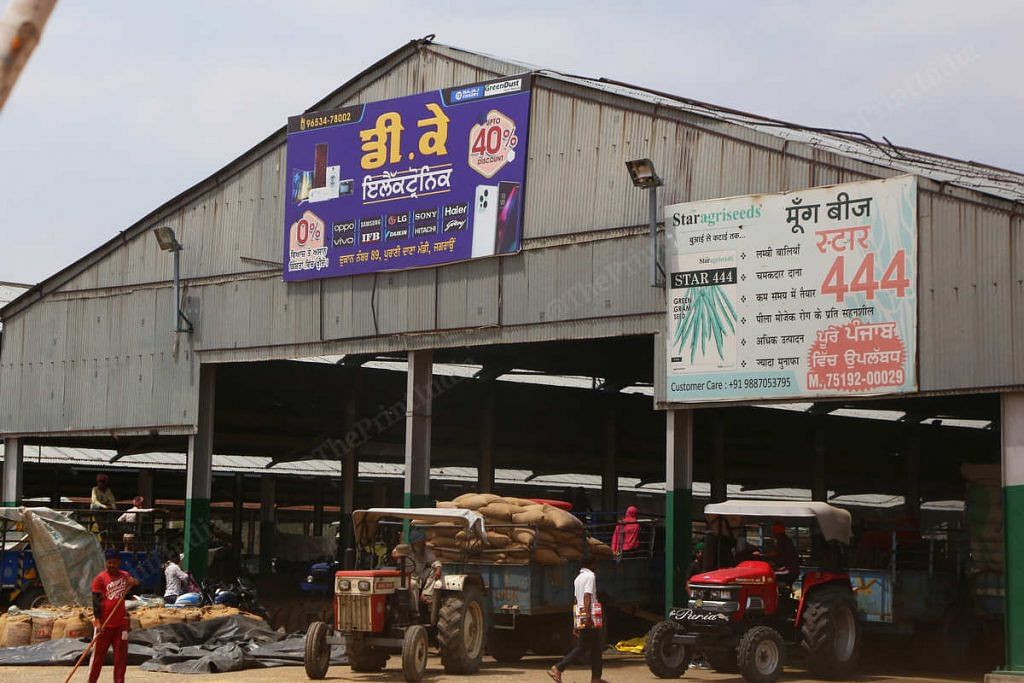
With unseasonably hot weather affecting the wheat crop this year and leading to an early harvest, a large number of farmers in Punjab took a gamble on moong. In fact, for Jagrar Singh and several others, this summer marked the first time they had grown moong in between their wheat and paddy crops.
“The surplus money we earn through moong will help us cover costs of wheat and paddy, which can be a big relief in such distressing times,” Jagrar Singh said.
Moong arrivals in Punjab’s mandis started on 13 June, with the state government notifying the beginning of the procurement season on 10 June. Until 17 June, according to state government records, around 11,000 quintals of moong had arrived in the state’s 40 mandis notified for its procurement.
The outlook is understandably positive this year, but growing moong is a notoriously tricky proposition in Punjab, right from the timing of the crop to harvesting.
Also Read: ‘Good money’ but a ‘big risk’: Why Punjab farmers are taking a gamble on moong this season
A push for moong, but challenges remain
On 6 May, the Punjab government announced an MSP of Rs 7,275 per quintal for moong grown by farmers before they sowed paddy, as a measure to encourage crop diversification and improve soil health.
Chief Minister Bhagwant Mann also made his announcement with the caveat that farmers would sow paddy of either the PR-126 or Basmati varieties in fields used for moong after its harvest since these mature more quickly and consume less water.
According to government records, which ThePrint has seen, moong cultivation in Punjab this year touched 1.25 lakh acres, as against 50,000 acres recorded last year. The government this year is expecting a total yield of 4.75 lakh quintals, against last year’s 2.98 lakh quintals.
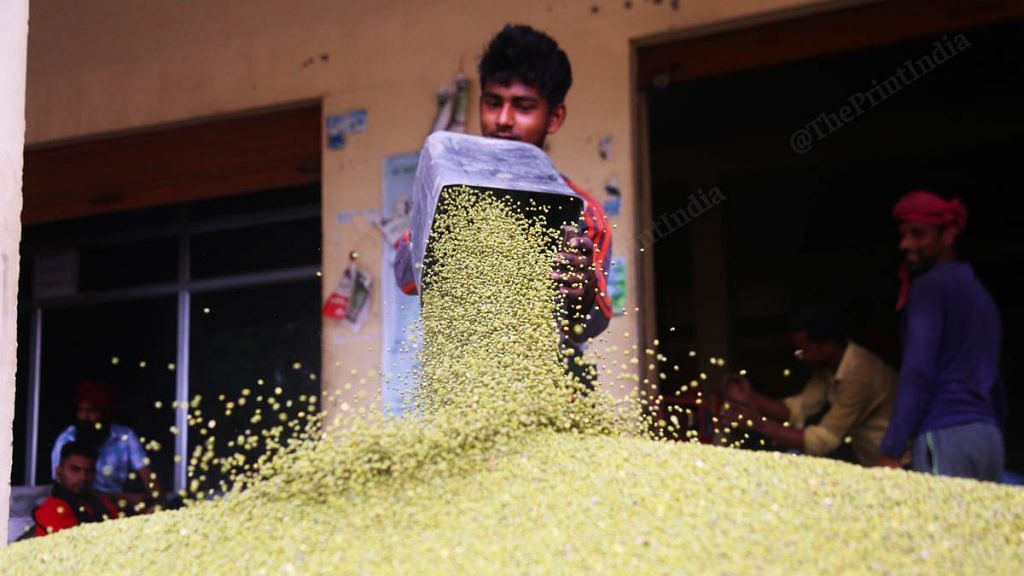
“A large number of wheat cultivators went for moong this year, encouraged by the early harvest. Many of them cultivated moong either for the first time or after many years,” an official from the department for management of wholesale agricultural markets told ThePrint, on condition of anonymity.
However, moong is severely affected by rainfall and has to be harvested before the monsoon sets in. Given that summer moong needs at least 60 days to complete its cultivation-to-harvest cycle, it’s a tough crop to grow between wheat harvest and paddy cultivation.
According to a senior official in the state government’s agriculture department, moong is usually grown by potato rather than wheat cultivators in Punjab since they get more time before sowing paddy. While potatoes are generally harvested by the end of March, the usual harvest time for wheat is late April.
“Wheat farmers who still take the risk often fail to get full harvest and sell off their produce either as fodder or as green manure,” the official said.
For potato cultivators, who are able to give around 90 days to the summer moong crop, one acre can yield six to seven quintals of moong. However, several farmers and mandi officials claimed that those who grew summer moong after harvesting wheat and managed to give 60-70 days to the crop are getting yields of up to four quintals per acre.
This is still a profitable proposition, even at market rates.
Data from wholesale markets across the country, as compiled by the central government’s Agmarknet portal, show that the price of moong currently varies between Rs 6,000-6,200 per quintal.
“Even if one sells at the market price of Rs 6,000 per acre, four quintals will translate to Rs 24,000. Factoring in the input cost of around Rs 8,000-10,000 per acre, farmers can expect surplus income of Rs 14,000-16,000. If one manages to sell to the government at MSP, it can go up to Rs 19,000-21,000 per acre,” Harender Singh, a Ludhiana-based farmer, told ThePrint.
However, for many farmers, moong cultivation comes with a learning curve, including for harvesting techniques.
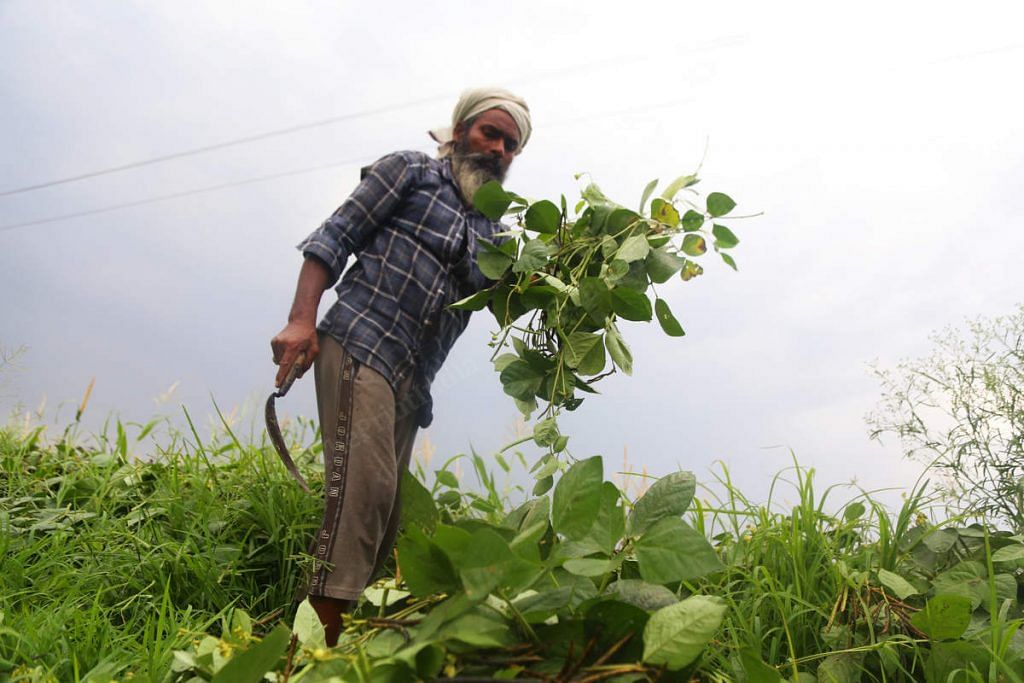
Lack of know-how about harvesting
According to 48-year-old Amandeep Singh, a farmer from Lohara village in Moga district, many farmers across the state used to cultivate moong three decades ago, but started giving it up as wheat-paddy monoculture set in — a transformation often associated with the Green Revolution.
Now, there is less know-how about moong harvesting, especially among the younger generation of farmers.
“Moong harvesting can be quite a technical affair for the less experienced,” Amrinder Singh, a farmer based in Ludhiana’s Lakhwal village, said.
According to him, there are three methods of harvesting.
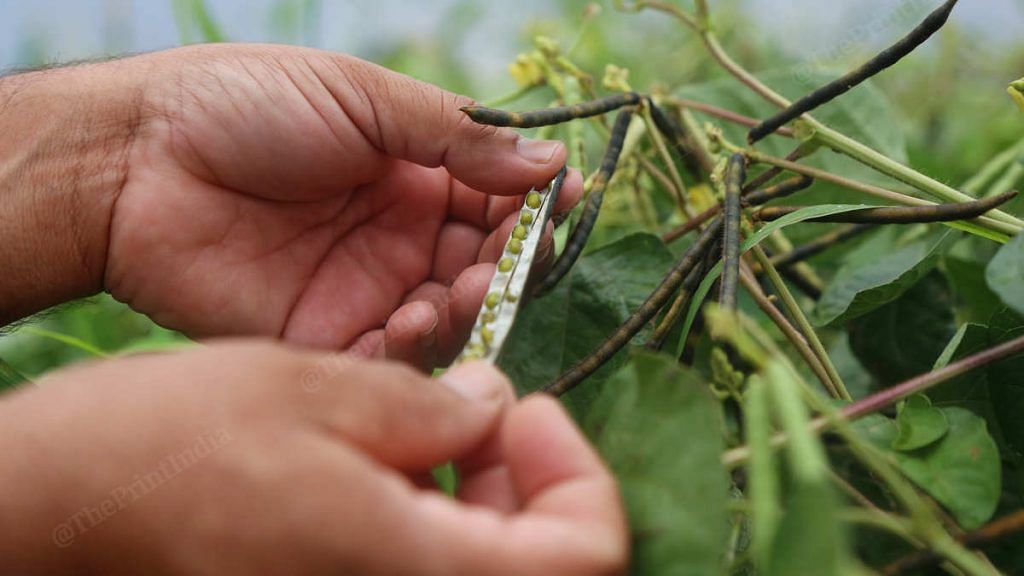
The most labour-intensive and time-consuming method entails plucking fully developed pods and then taking the seeds out manually. The second involves cutting the crop with a blade and then using a thresher to separate the seeds. The third method involves using a particular kind of weedicide spray to get rid of the leaves and then cutting the remnants of the crop with a combine — farming equipment that cuts and delivers the grain or seed crop to a threshing machine.
While the first process yields the best quality output, the third one is the most popular across the state, Singh and several other farmers told ThePrint.
“I am a first-time moong grower and I am lucky that I have people in my village to guide me,” Harpreet Singh, a 30-year-old Ludhiana-based farmer, said. “The weedicide and combine harvesting process is most popular not just because it saves time, but because it is currently difficult to find farm labourers with expertise in moong harvesting.”
(Edited by Asavari Singh)
Also Read: Answer to climate shocks? Heat-resistant wheat from ICAR hits markets, ‘grows in 100 days’


